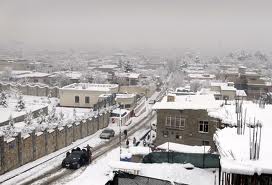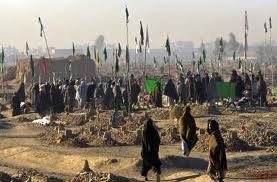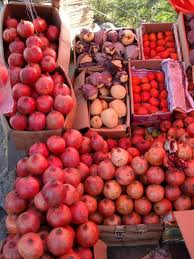Beautiful Kabul, with snow

Kabul and Afghanistan, in general, are very beautiful places to visually SEE and experience, although it is true that its aesthetic beauty is trumped by a dark reality of death and suffering.
There a lot of ways to die in Afghanistan and this fact is present everywhere, all around you.
With this photo of Kabul I can see a tantalizing snippet of what it must look like there in the wintertime. I am sure it is a bitter cold, day and night, one that poses an even greater challenge to daily life of common folks. But there must also be a quiet calm and a sense of possible renewal underneath that carpet of iciness. I wonder what common folks use for heating their mud-walled abodes? I doubt it is wood, certainly not for the poorest folks, and charcoal would have to be trucked in from afar—dung? One thing is true–nothing in this life comes easy for Afghanis in today’s Afghanistan.
I have only been to Kabul on one occasion, during Fall 2007 (on a project with Roots of Peace, a California-based NGO that does great work worldwide—http://www.rootsofpeace.org). Although things did not turn out as we hoped on that trip, at least that trip gave me some great memories and some great HDV footage that has yet to be properly used or edited.

There are vast areas of waving green flags. These flags are more like limp strips of cloth, but one sees them all over Kabul and Afghanistan. As it was told to me, those flags represent the place where someone had been killed or somehow met death. It is an eery sight, particularly with the sunlight glistening on the golden hills in the background. In my mind, ensconced somewhere in my heart, is my recall that Kabul and its surrounding valley areas are blessed places with California-like hills.
I recall villages and simple homes with mud walls, people with ancient faces, and a sense that life there was beginning, or at least re-emerging from ancient days, not ending in the mayhem of the present day.
In some cases the only evidence of 20th century modernity in the rural areas would be a glass window, otherwise the house and walled compound could have been similar to what I imagine housing structures might have been ike in centuries long past.

In the city of Kabul, I recall submerged and retreating examples of architecture from its glorious colonial past, illuminated brilliantly by an absolutely exceptional quality of sunlight. I saw communities of impoverished yet sturdy individuals struggling to survive under the harshest of conditions, living amongst unknown, sad pastures of death–there were land mines planted in the burial grounds, in cherry tree orchards, at the river banks where families receive their water.


In Afghanistan, I had the MOST delicious pomegranate berries imaginable. I also enjoyed an abundance of grapes and other fruits, but the pomegranates were by far the best I have ever tasted in my entire life-I gobbled those rosy-red berries as if my body yearned and found its missing nutritional benefit for years. Being landlocked and mired in mayhem it is difficult to see how those fruits can find a way to distant markets in Mumbai or Dubai or Riyadh or even Singapore, but I pray that somehow prosperity can return to Afghanistan. Iran and Pakistan have good quality fruits and vegetables too and those are making it outside to regional markets in the Gulf and beyond, but the fruits I had in Afghanistan were magically great–and those countries have seaports!
But, back to the initial point, the radiant sunlight and the astonishing magic hours that I saw in Kabul were very close in scope and nature to some of the best magic hour moments I have savored in California–natural marigold light and long shadows. Luckily, I was there with camera in hand and I still have the HDV footage that went unwanted by the client who sent me there.